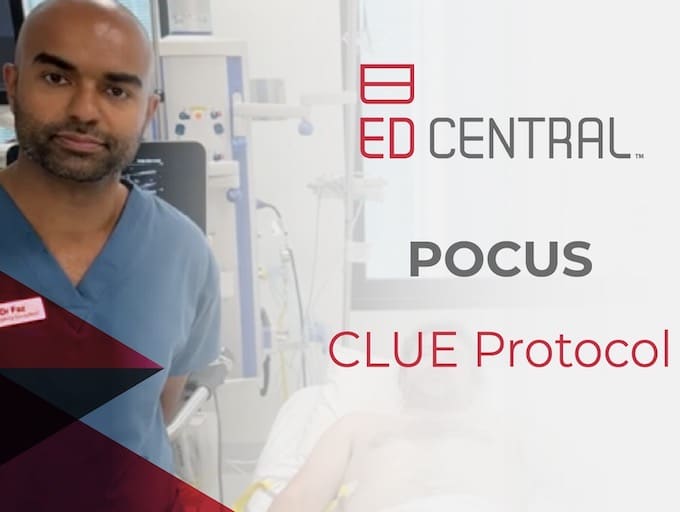
POCUS Made Easy: AAA
POCUS made easy: AAA scan is useful to look for a ruptured or leaking abdominal aortic aneurysm

POCUS made easy: AAA scan is useful to look for a ruptured or leaking abdominal aortic aneurysm

Focussed ECHO in Life support (FELS) is used to define cardiac pathologies such as cardiogenic shock, pericardial tamponade, signs of submassive/massive PE or hypovolaemia

The Gallbladder Ultrasound Exam in the Emergency Department can be used for patients with abdominal pain or jaundice to help in the diagnosis of: Biliary Colic, Cholecystitis or Ascending Cholangitis.

The Cardiopulmonary Limited Ultrasound Examination (CLUE) is a rapid shortened basic echo and lung exam combination to assess for cardiac and lung pathology.

Rapid-Ultrasound-for-Shock-and Hypotension (RUSH) is used to rapidly assess differential diagnosis causes of shock or hypotension.

The Renal Ultrasound Exam is used in the Emergency Department in the assessment of suspected renal colic.

Lung Ultrasound Examination looks for pulmonary pathology including acute pulmonary oedema, pneumonia, pleural effusion, pleural abnormalities such as pneumothorax

Fascia Iliaca Nerve Block is a regional analgesia nerve block used predominantly for hip fractures and femoral shaft fractures. The below video explains how to perform this block under ultrasound guidance.

eFAST (Focused Assessment with Sonography in Trauma) to look for haemothorax, pneumothorax, haemoperitoneum and haemopericardium

The DVT Ultrasound Exam in the Emergency Department is used mainly for assessment of above knee DVTs, in patients with suspected DVT. The video below explains how to perform an above knee DVT Ultrasound Exam.

Ultrasound guided vascular access. Overview of the process and procedure with top tips for success

Pick a body part. Pick a skin surface. Pick a block. The Nerve Block App makes regional anaesthesia easier on the go